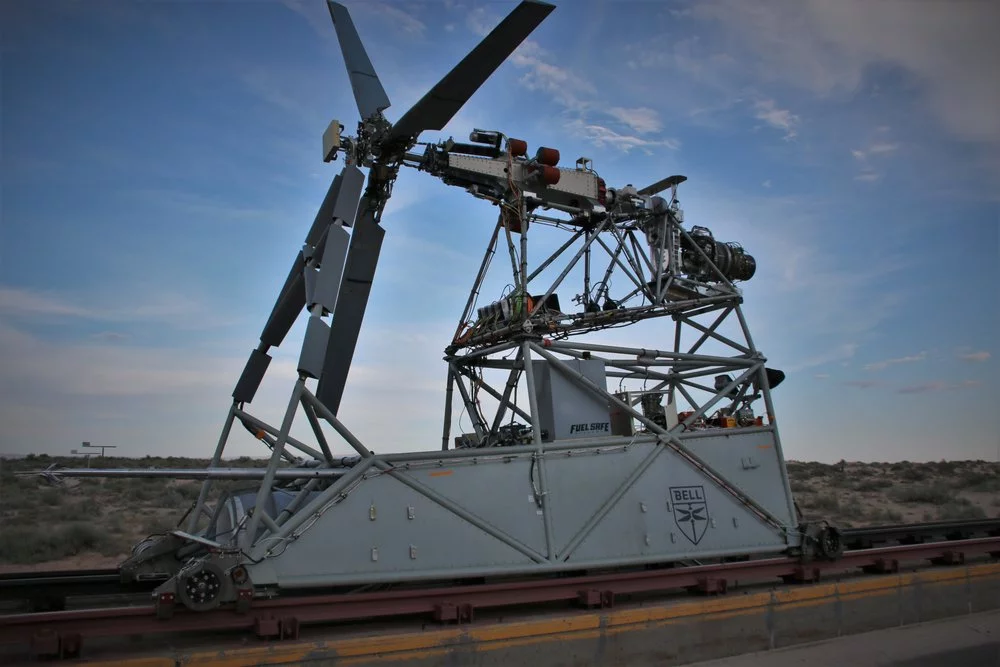Bell has released a video showing off its High-Speed Vertical Takeoff and Landing (HSVTOL) technology in action. The two-minute video shows a ground test of the nacelle system used to lift and land a VTOL X-plane before converting to jet flight.
Part of DARPA's Speed and Runway Independent Technologies SPRINT X-plane program, the Bell tests carried out at Holloman Air Force Base in New Mexico are intended to show how a rotorcraft can transition from rotor-propelled lift-off to jet-propelled horizontal high-speed flight.
The video shows the turbine-powered rotors on a track-mounted test bed powering up and applying thrust as they would in a takeoff situation that's similar to what one would see in a tiltrotor craft like the Osprey. In a similar manner to such craft, the X-plane in proper flight would tilt its rotor to the horizontal for forward flight, but there the similarity ends.

As can be seen in the test, once the craft reaches sufficient speed, the jet propulsion system is supposed to take over. That's all well and good, but it now means that the rotors become nothing but a liability, acting like brakes as they increase drag. To prevent this, the rotors are designed to feather and then fold back and lock into place.
When fully developed, the new pilot-optional aircraft is expected to be cable to cruise at high subsonic speeds of up to 450 knots (518 mph, 833 km/h) for a range of 200 nm (230 miles, 370 km) at altitudes up to 30,000 ft (9,100 m) while carrying payloads of up to 5,000 lb (2,300 kg) in a compartment large enough to hold a small vehicle. The purpose of the craft will be to provide runway independence for missions ranging from special forces insertion to disaster relief in inaccessible areas.
"The successful sled test completion is a culmination of Bell’s HSVTOL research and unprecedented technology development," said Jason Hurst, Executive Vice President, Engineering. "The technology demonstration provides Bell with critical experience and knowledge that will inform our X-plane development for DARPA’s SPRINT program. It is a pivotal step in the creation of the next generation of high-speed vertical lift aircraft for future war fighters."
The video below shows the Bell HSVTOL system in action.
Source: Bell








